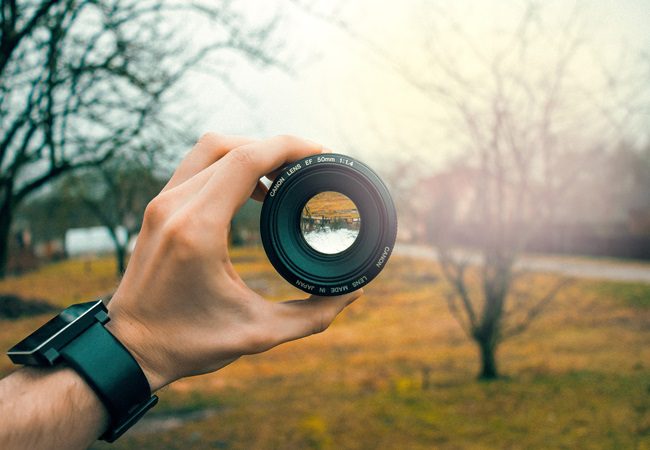Behind the Lens: Exploring the Top Photography Techniques of Professionals

Introduction:
Photography is an art form that combines technical skills with creative vision, and professionals in the field have mastered a diverse array of techniques to capture stunning images. From composition to lighting, the world behind the lens is rich with methods that elevate photographs from mere snapshots to works of art. In this exploration, we delve into the top photography techniques employed by professionals, offering insights that can inspire and enhance your own photographic journey.
1. Mastering Composition: The Foundation of Visual Storytelling:
Rule of Thirds:
Guiding the Viewer’s Gaze:
The Rule of Thirds is a fundamental composition technique that professionals use to create visually appealing and balanced images. The frame is divided into a 3×3 grid, and key elements of the scene are placed along these lines or at their intersections. This technique guides the viewer’s gaze and adds a dynamic and harmonious quality to the composition.
Leading Lines:
Drawing the Eye Through the Frame:
Leading lines are powerful tools for directing the viewer’s attention within an image. Whether it’s a winding road, a fence, or a row of trees, these lines create a natural flow that guides the eye through the frame. Professionals leverage leading lines to add depth and narrative to their photos, making them more engaging and immersive.
Framing:
Creating Depth and Context:
Framing involves using elements within the scene to frame the main subject. Whether it’s an archway, a window, or natural elements like branches, framing adds depth and context to the composition. This technique not only draws attention to the subject but also provides a sense of place and storytelling within the photograph.
2. Understanding Lighting: Sculpting the Perfect Image:
Golden Hour Magic:
Harnessing Soft, Warm Light:
The Golden Hour, the period shortly after sunrise or before sunset, is cherished by photographers for its soft, warm, and diffused light. Professionals often plan their shoots around this time to capture a magical quality in their images. The low angle of the sun during these hours creates long shadows and adds a beautiful warmth to the scene, enhancing the overall mood of the photograph.
Backlighting:
Creating Drama and Silhouettes:
Backlighting involves positioning the primary light source behind the subject, creating a compelling play of light and shadow. This technique is often used to create silhouettes, emphasizing the outline and form of the subject. Professionals leverage backlighting to add drama and a sense of mystery to their images, turning ordinary scenes into visually striking compositions.
Rembrandt Lighting:
Sculpting with Light and Shadow:
Named after the renowned painter Rembrandt, this lighting technique involves creating a triangle of light on the subject’s cheek opposite the main light source. Professionals use Rembrandt lighting to sculpt the face, adding dimension and a classic, timeless quality to portraits. This technique is especially effective for conveying depth and character in portrait photography.
3. Mastering Depth of Field: From Bokeh to Hyperfocal Distance:
Bokeh:
Creating Dreamy Backgrounds:
Bokeh refers to the aesthetic quality of the out-of-focus areas in a photograph, typically achieved by using a wide aperture. Professionals often use lenses with low f-numbers to produce a shallow depth of field, resulting in a creamy and dreamy background. Bokeh adds a touch of magic to portraits and isolates the subject from distracting elements in the environment.
Hyperfocal Distance:
Maximizing Sharpness from Foreground to Infinity:
Understanding hyperfocal distance is crucial for landscape photographers aiming to maximize sharpness throughout the frame. By focusing on a specific point in the scene, typically one-third of the way into the frame, photographers can achieve optimal sharpness from the foreground to the distant elements. This technique ensures that the entire landscape is crisply rendered, creating images with exceptional detail.
Shallow Depth of Field:
Emphasizing the Subject:
A shallow depth of field is achieved by using a wide aperture, isolating the subject from the background. This technique is commonly employed in portrait photography to draw attention to the person while creating a pleasing background blur. Professionals use a shallow depth of field strategically to guide the viewer’s gaze and evoke a sense of intimacy in their images.
4. Creative Use of Perspective: Seeing the World Differently:
Low-Angle Perspective:
Adding Drama and Impact:
Changing the perspective by shooting from a low angle can transform an ordinary scene into a dramatic and impactful composition. Professionals often get down low to the ground to capture unique angles, making subjects appear larger and more imposing. This technique is particularly effective in adding a sense of grandeur to architectural or natural elements.
Bird’s-Eye View:
Providing a Unique Perspective:
A bird’s-eye view, captured from an elevated position, offers a unique perspective that can be visually arresting. Professionals utilize drones, elevated platforms, or simply shoot from higher ground to create images that provide a fresh and unexpected viewpoint. This technique is especially effective for capturing patterns, symmetry, and a different dimension to everyday scenes.
Forced Perspective:
Playing with Optical Illusions:
Forced perspective involves manipulating visual perception to create optical illusions. This technique plays with the relative size and placement of subjects to deceive the viewer about the actual scale or distance in the scene. Professionals use forced perspective creatively, resulting in whimsical and imaginative images that challenge the viewer’s perception of reality.
5. Post-Processing Techniques: Enhancing the Final Image:
Dodge and Burn:
Fine-Tuning Light and Shadow:
Dodge and burn is a post-processing technique used to selectively lighten (dodge) or darken (burn) specific areas of an image. Professionals employ this technique to enhance the tonal range, add dimension, and draw attention to specific elements within the photograph. Dodge and burn provide a level of control that allows photographers to fine-tune the lighting and emphasize details.
High Dynamic Range (HDR):
Balancing Exposure in Challenging Conditions:
HDR photography involves capturing multiple exposures of the same scene at different exposure levels and combining them in post-processing. This technique is particularly useful in challenging lighting conditions, such as scenes with high contrast. By blending multiple exposures, professionals ensure that both highlights and shadows are well-balanced, resulting in a final image with a wide dynamic range.
Color Grading:
Setting the Mood and Tone:
Color grading involves adjusting the colors in an image to create a specific mood or tone. Professionals carefully choose color palettes to evoke emotions and enhance the overall atmosphere of their photographs. This technique goes beyond basic color correction, allowing photographers to infuse their images with a distinct visual style and narrative.
Conclusion:
The world of professional photography is a tapestry of techniques, skills, and creative approaches that continually evolve with the medium. As you embark on your own photographic journey, exploring and mastering these techniques can elevate your work and help you craft images that resonate with depth, emotion, and visual impact. Whether you’re framing a portrait, capturing the play of light, or experimenting with post-processing, each technique contributes to the rich and diverse language of visual storytelling. So, grab your camera, experiment with these professional techniques, and unlock the true potential of your creative vision behind the lens.





